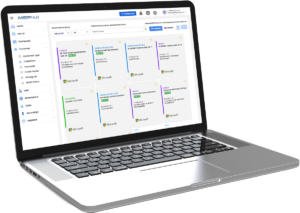 In the space of just a few years, working remotely has gone from being a perk for a lot of employees to a mission-critical function for senior executives. I experienced this first hand as my previous employer would incentivize employees by letting them work from home. Many B2B sales positions are now shifting to a work from home model. It cuts costs on office space while allowing the employee to stay more connected to their home life without disrupting their workflow. In turn, you get a happier employee and a higher profit margin for the company!
In the space of just a few years, working remotely has gone from being a perk for a lot of employees to a mission-critical function for senior executives. I experienced this first hand as my previous employer would incentivize employees by letting them work from home. Many B2B sales positions are now shifting to a work from home model. It cuts costs on office space while allowing the employee to stay more connected to their home life without disrupting their workflow. In turn, you get a happier employee and a higher profit margin for the company!
A distributed, mobile workforce is just as reliant on data as their deskbound colleagues and it’s down to the CTO to deliver that connectivity.
Traditionally, RAS, VPNs, firewall ports and account permissions were the main security measures. They provided decent control and were the best option at the time. Nevertheless, they added significantly to the administrative burden of the IT team.
The Cloud – Securely simplifying data and resource access
Cloud services have helped to greatly simplify access to corporate applications and data for remote workers. But ease-of-deployment comes at the cost of a loss of control. For example, when using Office 365, security is in the hands of Microsoft. This loss of control isn’t as scary as it sounds, however – once you realize what Microsoft has in place to protect your data and users.
Encryption
Most professionals know better than to use “password” or “puppy” to encrypt their computers and accounts. But the most secure passwords use different characteristics to deter hackers, including lower- and upper-case letters, numbers, and special symbols. They should also include 8 or more characters. I know, I know it’s annoying. Try using a free program called LastPass. It helps to store all of your passwords on to their highly secure platform. So really, all you have to do is remember ONE password which will be on Lastpass. Now make sure to make that password a good one!
Aside from mistakes made by unknowing users, hacking and malware present the biggest risk to your data. In the unlikely event that hackers do make it through the software’s perimeter defenses, you need to be sure that data can’t be used by thieves. For this reason, programs like Office 365 offer data encryption in transit and at rest. So if data is intercepted between the user and the Cloud, it is encrypted using TLS or IPSec. And if they do break into Microsoft’s systems, cybercriminals will be unable to access data because it has been protected using some of the most stringent security methods.
Advanced Threat Protection
By shifting your internal network and remote devices to the Cloud, there is still a risk that these hosted systems become a method by which malware attacks your in-house systems. Replacing the in-house email server with hosted Outlook 365 means giving up control of your malware and anti-spam filtering capabilities – at the server level anyway.
Microsoft employs Advanced Threat Protection to eliminate threats as they go through the Cloud. Office 365 provides robust protection against known email-borne malware and previously unidentified, emerging threats. Every Microsoft Cloud platform is configured to identify and block suspicious network activity automatically before it can access your data or your corporate network.
Backing up sensitive files
While file sharing and syncing are effective ways to back up documents, they should not replace the use of external devices. By backing up files virtually and physically, you can all but guarantee your business will have access to its data even in the event of system crashes or attacks.
Multi-factor authentication
To add further peace of mind, (and a tad bit of annoyance) most software vendors also include multi-factor authentication as standard. So even if your remote employee does accidentally divulge their login details (or has them stolen), the account still cannot be accessed without the second authentication factor, whether it be SMS, voice call or mobile app. These methods can all be used to increase security beyond the basic user account.
Boosting your overall security provisions
Cloud platforms are introducing new security provisions that enhance your own. So you benefit from the ease of access, particularly for remote employees, and boosted protection for your data.
Key takeaways
- Cloud software, like Office 365, provide multiple layers of encryption to prevent your data being exposed
- You can easily replicate existing security controls in the Cloud
- ATP scanning protects your resources inside and outside the cloud vendor’s data center
- Multi-factor authentication strengthens your overall security.



